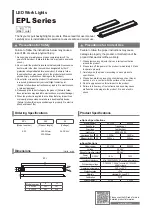
12
S P E C T R A C O L O R G U I D E
The Rembrandt’s innovative SpectraColor system combines the established and well known CMY / CTO
controls with three Pure RGB flags that are seamlessly adjustable. These flags greatly enhance the possible
color range of the Rembrandt for some truly outstanding colors that can be difficult to achieve with only CMY
controls.
It is highly recommend that the technician become familiar with this unique color system to fully unlock
the creative potential of the SpectraColor array.
Cyan, Magenta and Yellow saturation chosen for a wide color range and are aligned with other colors in the
Artiste range. CMY is a subtractive color mix that removes certain colors from the light to create the desired
color. Flags can be combined in any saturation to create a wide range of mixed colors.
RGB are “pure” color points chosen for best saturation. These are also subtractive, e.g. adding the Red flag
will remove all other wavelengths. While it is possible to overlap the RGB colors, it will eventually black-out the
fixture as all colors essentially reduce until there is no output. On consoles they should be shown as Pure Red,
Pure Green, and Pure Blue. This is done so console color pickers do no interact with the RGB flags. All color
flags must default to 0% in the console profiles.
Mixing CMY colors is identical to many other fixtures in the market. CMY colors can combine with the CTO to
create a warmer array of colors. Overall, the behavior of the CMY system should feel familiar, and with the high
intensity of the Rembrandt, all colors are brilliant and powerful.
The CTO filter is designed to adjust the Rembrandt from its native color temperature of 6500K to 2700K. Full
CTO in combination with Cyan Magenta or Yellow allow for a warmer color palette. For example, Yellow shifts
from a slightly greenish tone to a warm amber yellow. Utilizing the adjustable CTO with the CMY system greatly
enhances the color range of the Rembrandt.
Using Pure Colors
Pure Red, Green, or Blue are ideal colors to create subtle hues to saturated colors. Mixing a slight blue shifts
the Rembrandt from White over CTB, over light to medium purples, until it reaches a rich Medium Blue. Using
Green allows for teals and green tints similar to fluorescent fixtures until it transitions into a bright medium
green. These color tones make the Rembrandt an ideal tool for theater and opera designers as the SpectraColor
system allows the replication of many color spectrums associated with unique light sources like metal halide,
sodium vapor, or fluorescent tubes, all out of one fixture.
Creating Color Mixes Using SpectraColor
CMY and RGB flags can be combined to widen the color gamut of the CMY mix. Start with a slight to saturated
CMY color, then add a little Red, Green, or Blue to change the hue. Never use RGB together, only one of those
colors at a time will be useful. Otherwise the fixture will only get darker as overlapping RGB acts like a dim to
black.
Perceived Color Brightness
Please be aware that due to the very high intensity of the Rembrandt, the CMY colors may not look fully
saturated, especially when placed next to a lower intensity fixture. This is misleading as your eye cannot handle
the high intensity well, and colors that are in fact identical may appear different to your eye. To confirm, simply
dim-down the Rembrandt to match the output level of a comparison fixture. You should find color appearing
more saturated, even though nothing has changed on the color itself. Reducing the output helps your eye to
see the color better.













































